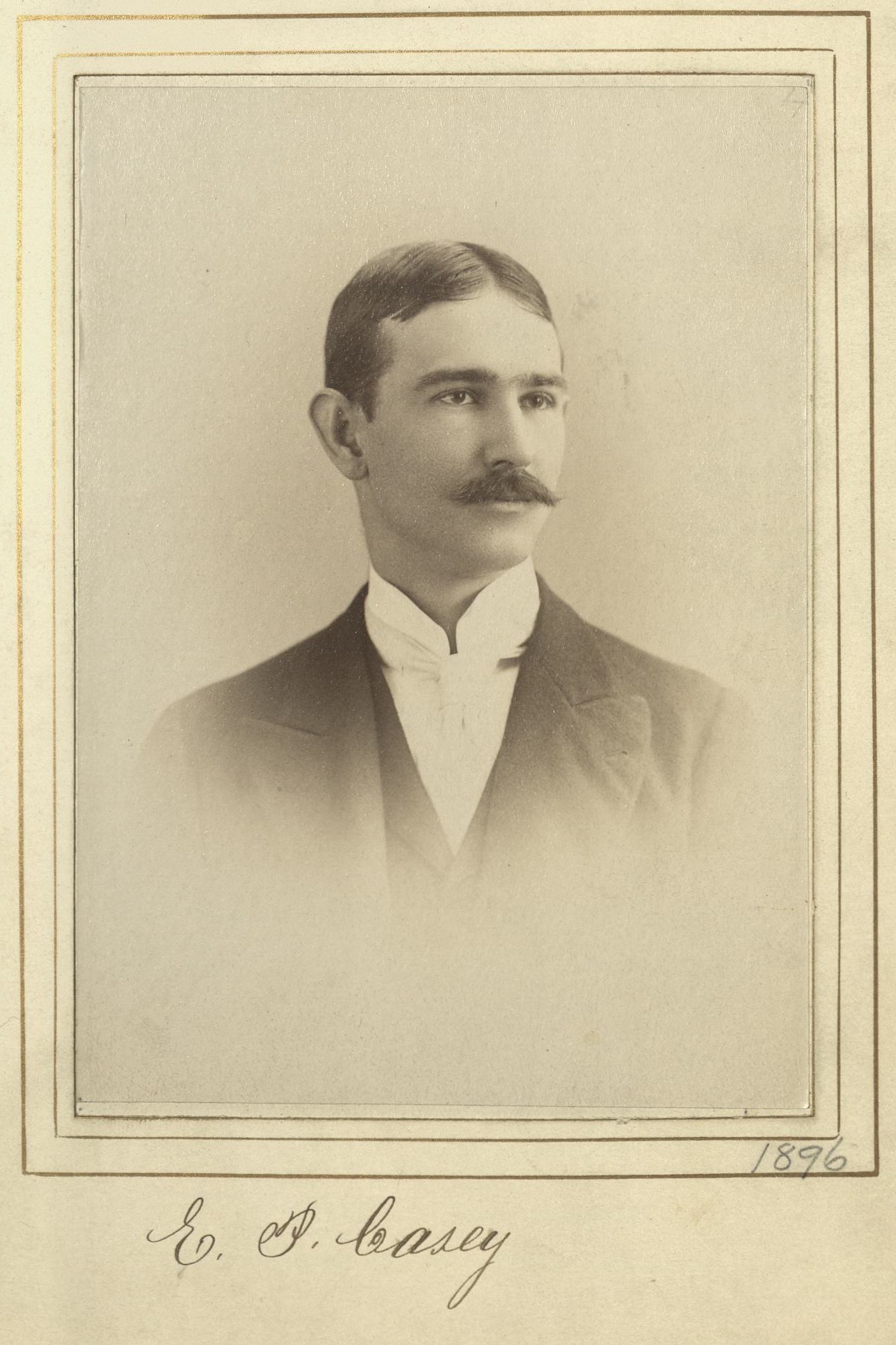Architect
Centurion, 1896–1940
Born 18 June 1864 in Portland, Maine
Died 2 January 1940 in New York (Manhattan), New York
Buried Silas Casey Cemetery , North Kingstown, Rhode Island
, North Kingstown, Rhode Island
Proposed by Stanford White and George Willoughby Maynard
Elected 1 February 1896 at age thirty-one
Archivist’s Note: Son of Thomas Lincoln Casey; brother of Thomas Lincoln Casey; nephew of John F. Weir, Julian Alden Weir, and Robert F. Weir
Proposer of:
Century Memorial
It is related that before Edward Pearce Casey had gone in the late ’eighties to Paris for three years of architectural study at the Ecole des Beaux Arts, he learned that his father, General Thomas Lincoln Casey (a Centurion) had built the original portion of the Library of Congress in Washington well within the appropriation and was about to turn back to the Government a considerable sum of money. Young Casey suggested that the money be spent for decorative paintings by Elihu Vedder, Edwin H. Blashfield, George W. Maynard, Kenyon Cox and others. Although such decoration was not in fashion at the time, General Casey is said to have acted upon the suggestion; and thus a contribution was made to a movement of far-reaching importance to art in America.
A native of Maine, Edward Pearce Casey received at Columbia the degree of Civil Engineer in 1886 and that of Bachelor of Philosophy two years later. From 1892 to 1897 he was the architect in charge of completing the Library of Congress. Thereafter he designed many federal monuments and structures, as well as New York State monuments at the battlefields of Antietam and Gettysburg and a building for the American College at Beirut.
He served in the old Seventh Regiment and was active in several patriotic societies. One of his grandfathers was a major general in the Civil War, another was Robert Weir, painter of “The Embarkation of the Pilgrims,” which hangs in the Capitol at Washington, and father of J. Alden Weir. He was a regular frequenter of the Century during his forty-four years of membership. How greatly he prized his associations there his will bore witness.
Geoffrey Parsons
1940 Century Memorials

